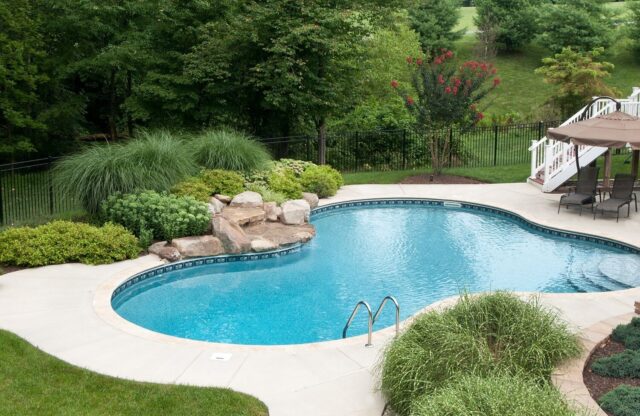
Building and designing your own swimming pool could be more difficult than it seems along with the number of choices, considerations, and requirements that come with it. A DIY swimming pool lays the groundwork to a new degree as you must plan out your project in greater depth. We are here to help you and give out a few helpful tips for undertaking the challenge of DIY-ing your swimming pool.
1. Prepare beforehand
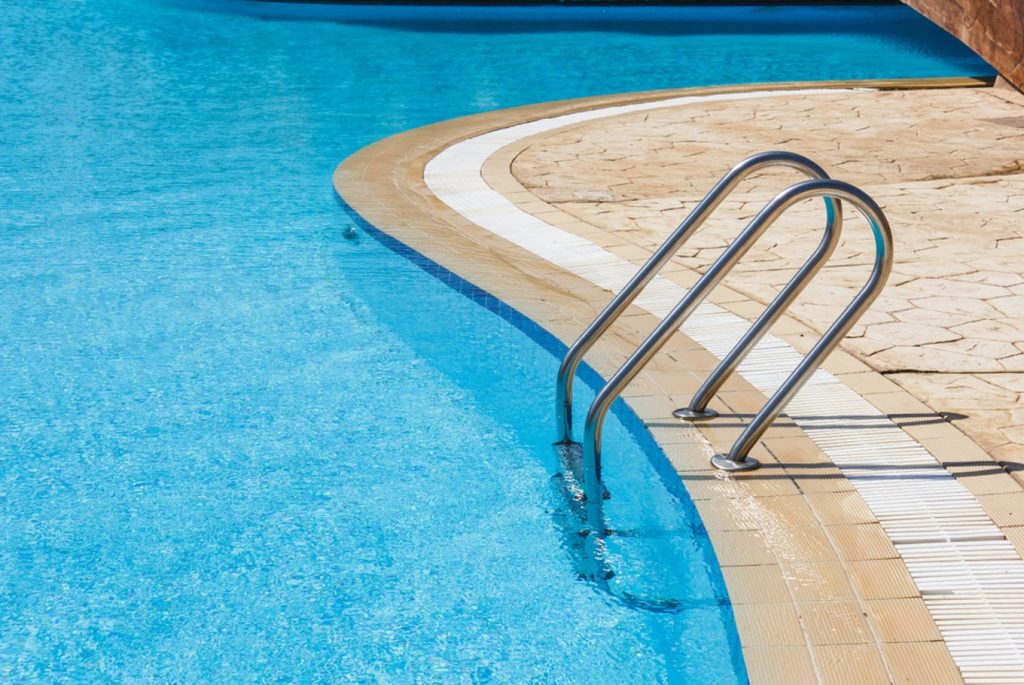
It should go without saying that you need to give yourself time to thoroughly plan out a big project like this one. According to Fort Myers pool builders you need to be certain about the layout decisions because they will have long-term effects concerning the enjoyment of the pool.
However, depending on where you live, you might need to apply for a construction permit a few months ahead of time before you actually start doing any work. Also, you need to determine what accessories you need and what are within your allotted budget. Accessories like pool blankets or covers, pumps, and landscapes are vital to plan out so you have an idea of what you need.
2. Keep it small and simple
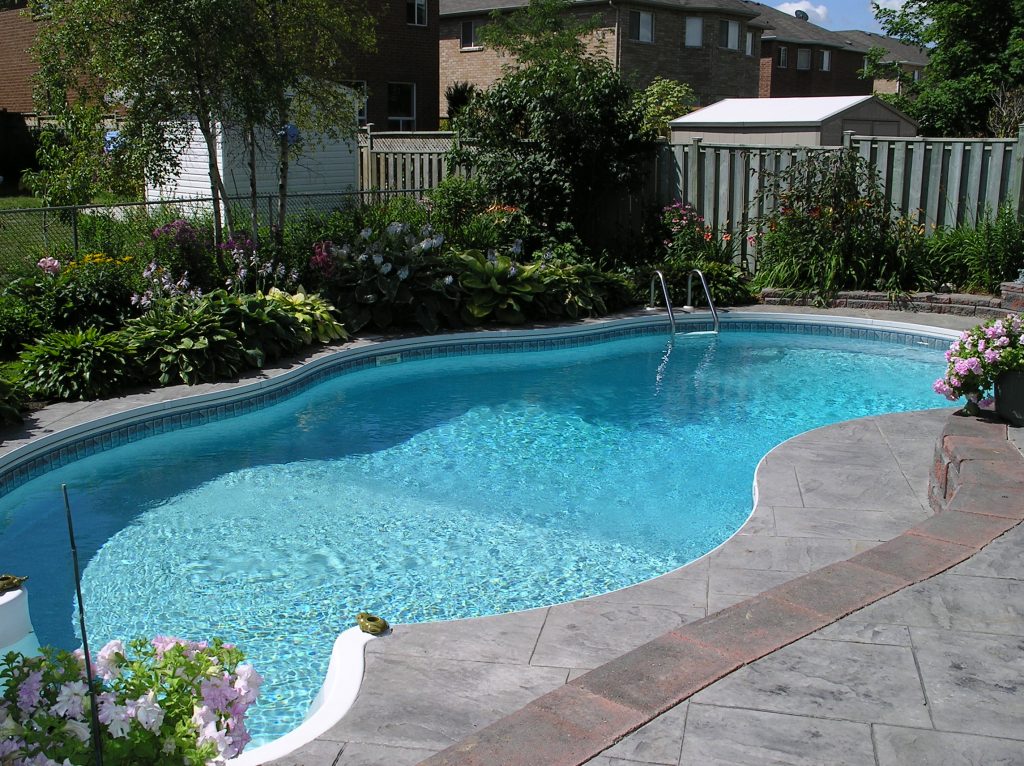
If you’re unsure about the size of your pool, consider going with a small one, otherwise, the amount of work you have to do will rise dramatically. Keeping it simple and small would save you time and more backyard space, which might be useful in the long run whereas, going overboard could completely ruin your project. Here are a few tips to keep your DIY swimming pool small and simple:
- Pick a simple shape
- Prepare a step by step plan for each stage
- Create a routine that you will tend to
- Be sure to have some extra money in hand
3. Make use of a pool kit
Purchasing a swimming pool kit will make it much easier for you to design your pool especially if you don’t like having to choose from a small selection of styles, shapes, and features. Any of these packages provide all the necessary items you need for building your swimming pool, as well as phone service to guide you through the process. While you might not be able to install the pool you have in mind, several kits offer a range of installation choices. They are available in a variety of shapes and sizes as well as costume-made ones to suit your needs.
4. Keep it healthy
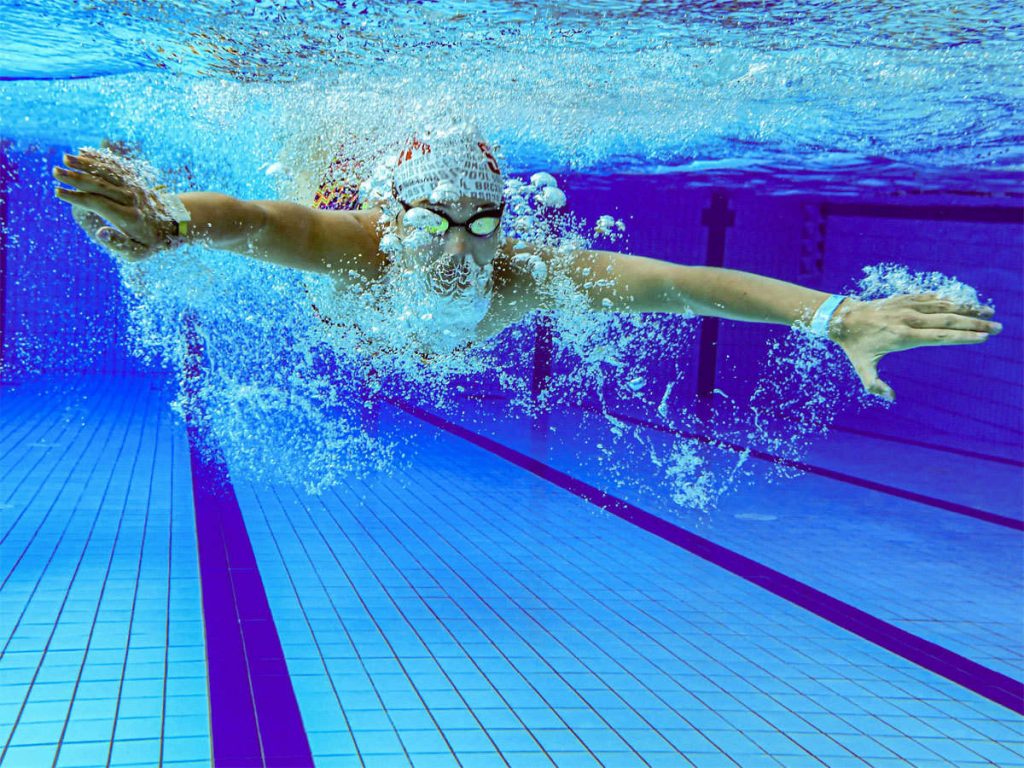
It is essential to take the required precautions to keep your swimming pool healthy and in good shape otherwise, you would need to spend a lot of money clearing up the cloudy waters. Here is how you can do that.
- Chlorine levels. Based on how much you use your swimming pool, you need to maintain the level of chlorine in your water. Chlorine is used to ensure that your pool is free of bacteria and maintaining the right chlorine amount, will protect you from these microorganisms.
- Keep algae from growing in your pool. Algae spores may be introduced to your water by polluted ocean swimwear as well as blow into it. They are often present in your pool and can bloom into a colony if the conditions are favorable to them. So keep your pool clean on a regular basis and if you notice green water instead of blue, clean and remove all the algae that has been building up.
- Maintain pH level between 7.4 and 7.6. Maintaining this level of acidity, you will be able to avoid things such as eye irritations as well as help prevent rust and residue buildup in your pipes. However, pH levels below 7 or above 8 will increase the growth of water-borne species, causing a whole dozen of new issues for you.
- Do not use additional chemicals in your pool. Many people like to experiment with various kinds of chemicals instead of using chlorine for cleaning their pools. Bear in mind that applying the right level of chlorine to your pool, like mentioned above, is more than enough to keep the water safe and eliminate bacteria.
5. Don’t make it too deep
Swimming pools that are over 2-meters in length need a lot of reinforcement, so if you want to avoid spending extra money on additional support walls, we recommend you build them under 2m.
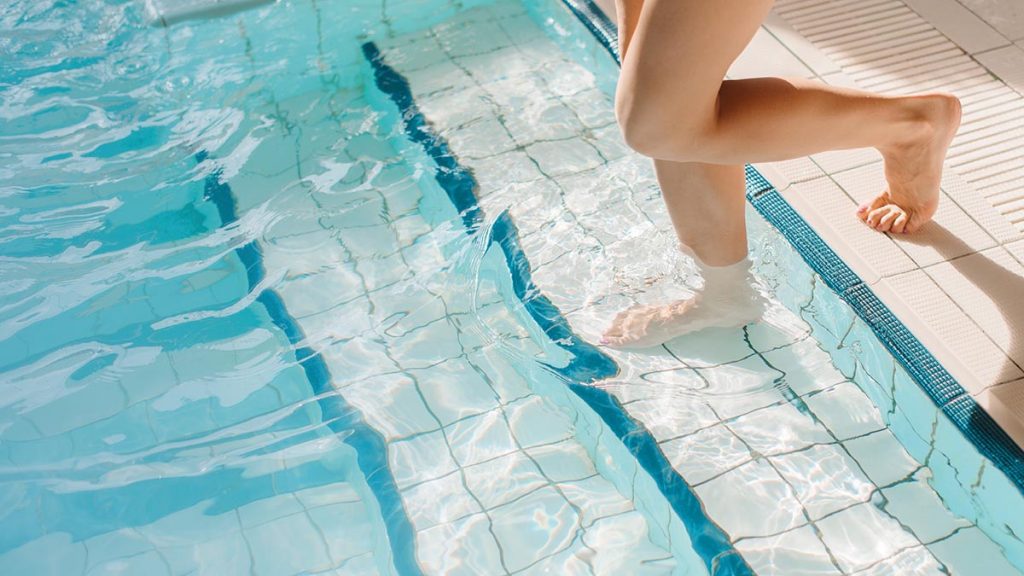
This way you would save money and the pool would be very easy to maintain as well as keep clean since chemical supplies are the first area where a shallower pool saves money. With less water to clean, fewer cleaning solutions, algaecide, oxidizers, and balancing substances are needed to ensure a safe swimming area. In addition to that, this depth would be perfect for anyone who isn’t a professional diver.
6. Save space
While deciding how much room you need for your DIY swimming pool, experts suggest that the pool itself takes up about 25 percent of your backyard or outdoor entertainment area. In which case, you would need space for a pool patio or a covered patio, barbecue area, and a lawn area. Additionally, you will want to allow space for a shed to store pool equipment as well as deck chairs and umbrellas in winter.
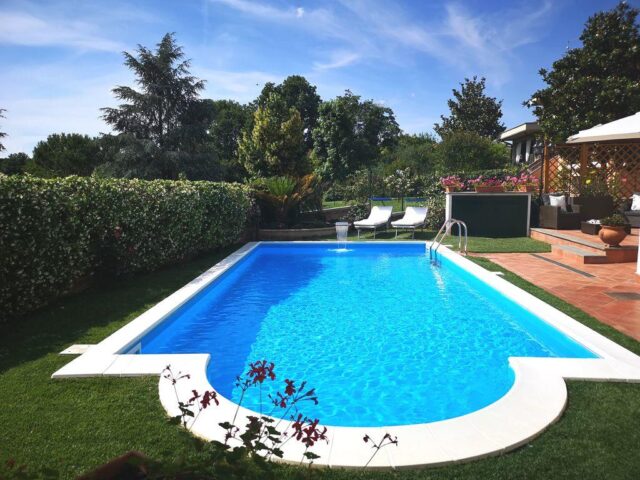
Swimming pools beside the swimming and backyard area also need a designated space for vegetation and filtration around. So make sure to save about 50 percent of the pool’s surface area for shallow plants. To be more specific, the space for filtration and sterilization equipment should typically be more than 3.5 meters away from the pool but ideally less than 10 meters away. This would complete the environment and eliminate the need for a costly filter and chlorine.
Furthermore, mapping out the area for the design and the extra room you will use, will give you a better idea of what you’re doing, guarantee that you’re not underestimating the amount of room available, and ensure that your swimming pool is a perfect match.
Building your own swimming pool is no easy task, so make sure you have given this project a lot of thought before investing your money into it. Read more about this on SunLover Heating.







